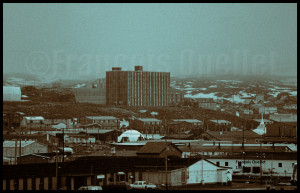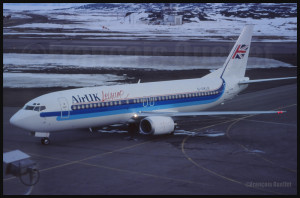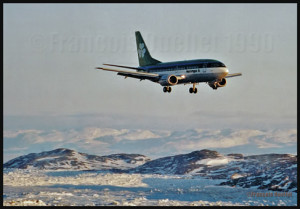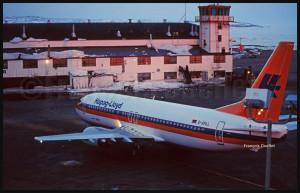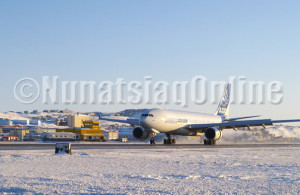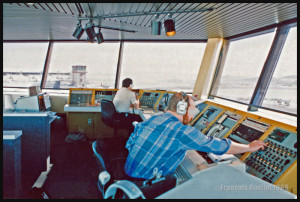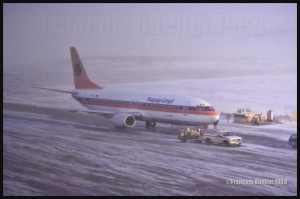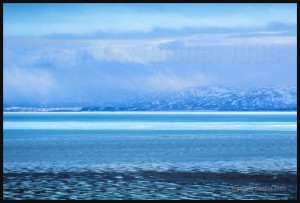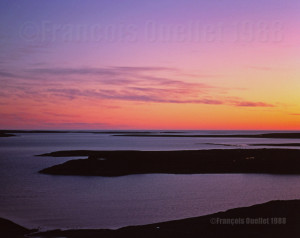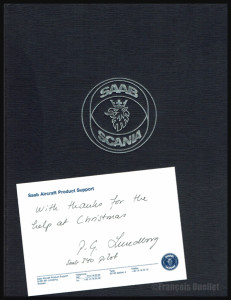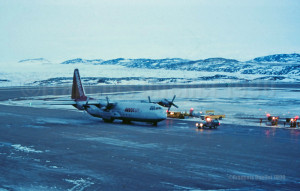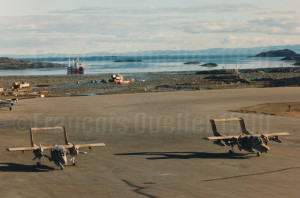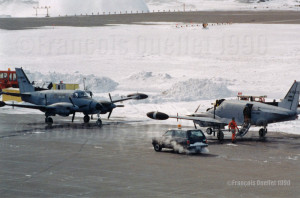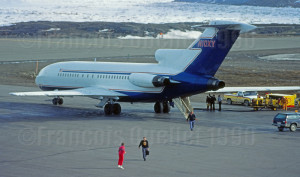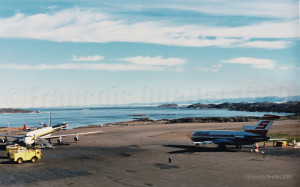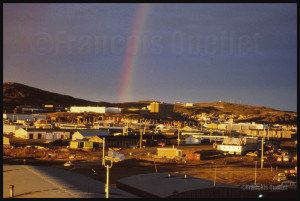In 1990, Stacey Campbell, a News North journalist, wrote an article that she titled: “Iqaluit Drug Haven”. She wrote that the Iqaluit airport was the main point of arrival for the entire drug being used all over the Baffin Island region, in the Nunavut. Mail was also another tool used by drug trafficker. It was quite easy to find marijuana, hashish and cocaine.
On the top floor of the eight stories building in which I lived, there were an increasing number of drug users. While only a year ago the place was relatively quiet, it was not the case anymore. From my small apartment, I could hear the shouting in the corridor or in the neighbouring rooms and the “OPEN THE DOOR!” ordered by the RCMP police officers.
There were cases of domestic violence, fights, people which I had to step over to walk in the corridor as they were lying down on the floor in their vomit, totally intoxicated. Near where I lived, somebody was thrown out of an apartment in a rather radical way: the door and its fittings were now missing and there was blood on the wall. The place is far less peaceful than last year.
In a nearby room, several drug users met, mostly on Friday nights. Quite often, tension rose between card games. The place had become unsuitable for somebody trying to rest while on a seven days a week shift work providing air traffic services at the local Transport Canada flight service station.
I remember one time when somebody started to kick on my door while I was studying quietly in my room. I could hear him shout: “I am going to kick your ass!” Since I had no idea of what was going on and as it seemed that I was directly concerned, I opened the door.
I then recognized a person whom I politely asked, at least six months ago, to try to lower the noise level. All those months went by and tonight, in an altered state, he suddenly remembered that request. He visibly took my request as a personal insult. He was now under the influence of an unknown substance and was angry.
He was standing in the corridor. Any moderate reaction on my part seemed useless, considering his situation. It appeared that only a quick and radical move would bear some success.
I tried to slowly close the door but he blocked it with his hand. The situation was getting worse. I waited few seconds and tried again, calmly and without a word. In few seconds, if nothing was working, there would only be one solution left. I gently pressed on the door and he totally surprised me by letting go so that in about twenty seconds, the door was closed again.
All this was done in total silence. In my room, I stood few feet away from the door, expecting it to be slammed open but nothing happened. Only that silence all around. After few minutes of having stood still, waiting for the next logical step, I realized that everything was over. What a weird night! This would not have ended the same way in a big city down South.
I can really say that in 1990, Iqaluit was in fact a drug heaven. Moreover, the floor where I had my room was no exception. I was eventually able to move to another floor where there were people with a more balanced lifestyle and the need to sleep once in a while…
For more real life stories as a FSS in Iqaluit, click on the following link: Flight service specialist (FSS) in Iqaluit
